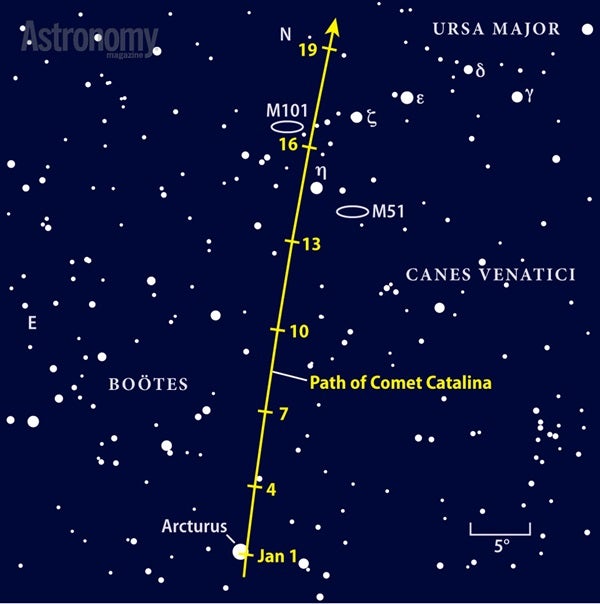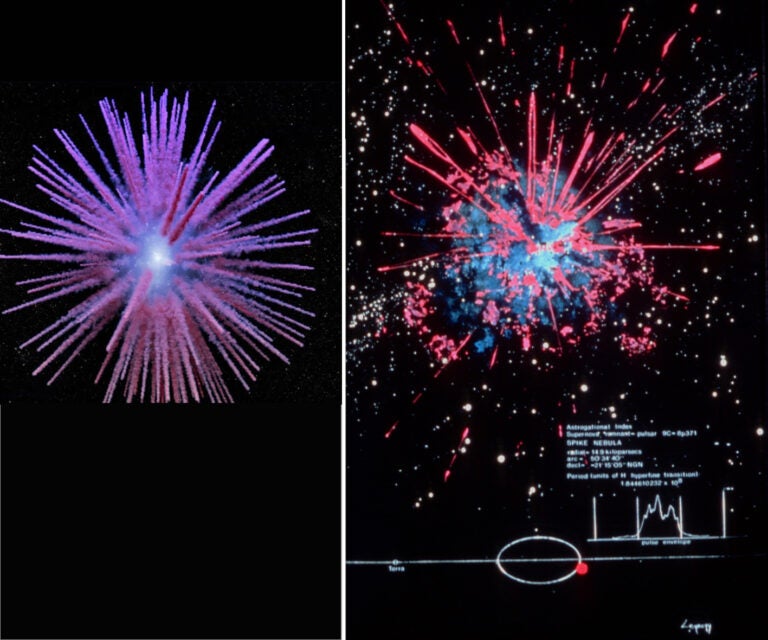Henry Wadsworth Long-fellow, one of my favorite poets, inspired me to hear the “voice” of the night. For instance, in his 1839 poem “Hymn to the Night,” he writes: “I heard the trailing garments of the Night / Sweep through her marble halls!” With these words, Longfellow transforms a mute vision into a sweeping gesture of elegant sound.
But did you know that early stargazers once imagined some stars to be vociferous?
A radiant voice
If you look east around 9 p.m. this month, you’ll see golden Arcturus (Alpha [α] Boötis) shining midway up the eastern sky in the constellation of the Herdsman, which people also have imagined as a ploughman, an ox driver, a shepherd, and more. For instance, an early Arab translation of Ptolemy’s Boötes defines it as Auwd, meaning the “vociferator.”
A visual cue
If you have trouble hearing the shouts, just turn your attention to the star pattern’s beacon, Arcturus. The ancient Chaldeans identified Arcturus with Papsukkal, the guardian messenger — messenger being the operative word because Arcturus has long been seen as the announcer of spring. As Martha Evans Martin reminds us in her 1907 book, The Friendly Stars: “When spring evenings fall, the splendor of Arcturus burns forth in the eastern sky ‘announcing the end of the purple twilight.’ ”
Arcturus is the brightest star north of the celestial equator, just outshining Capella, the Alpha star in Auriga the Charioteer. A classic orange giant star 37 light-years distant, Arcturus appears splendidly “chatty” to the eye, randomly spitting out colors as it twinkles, like words on fire. This bold chatter may be why in Ptolemy’s Almagest, Arcturus is et nominatur Audiens, which means the star “calls upon hearing.” This may refer to the fact that Nekkar (Beta [β] Boötis), whose name means “to beckon,” appears to be calling out to Arcturus as it closes in on the Great Bear in the drive.
Then again, in the eyes of early Arabian skywatchers, Nekkar — together with Gamma (γ), Delta (δ), and Mu (μ) Boötis — belonged to a pack of hyenas lying in wait of the Herdsman’s flock. So Nekkar’s cry may just be a celestial call of the wild.
In case you can’t hear Nekkar or its kin, early Arab astronomers spelled it out for you: Theta (θ), Iotα (ι), and Kappa (κ) Boötis, three stars that collectively represent the “Whelps of the Hyenas.”
As always, give me a shout at sjomeara31@gmail.com.











